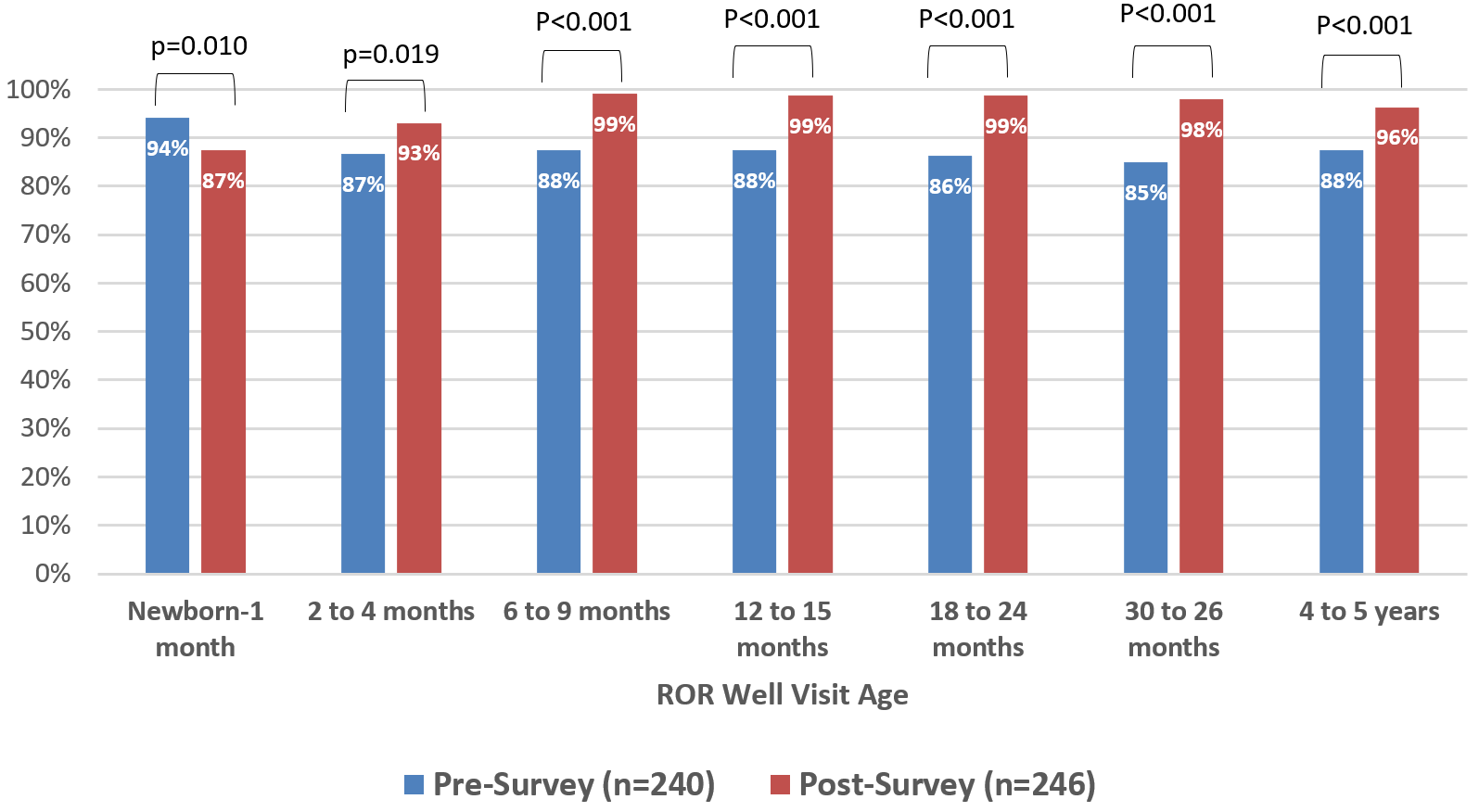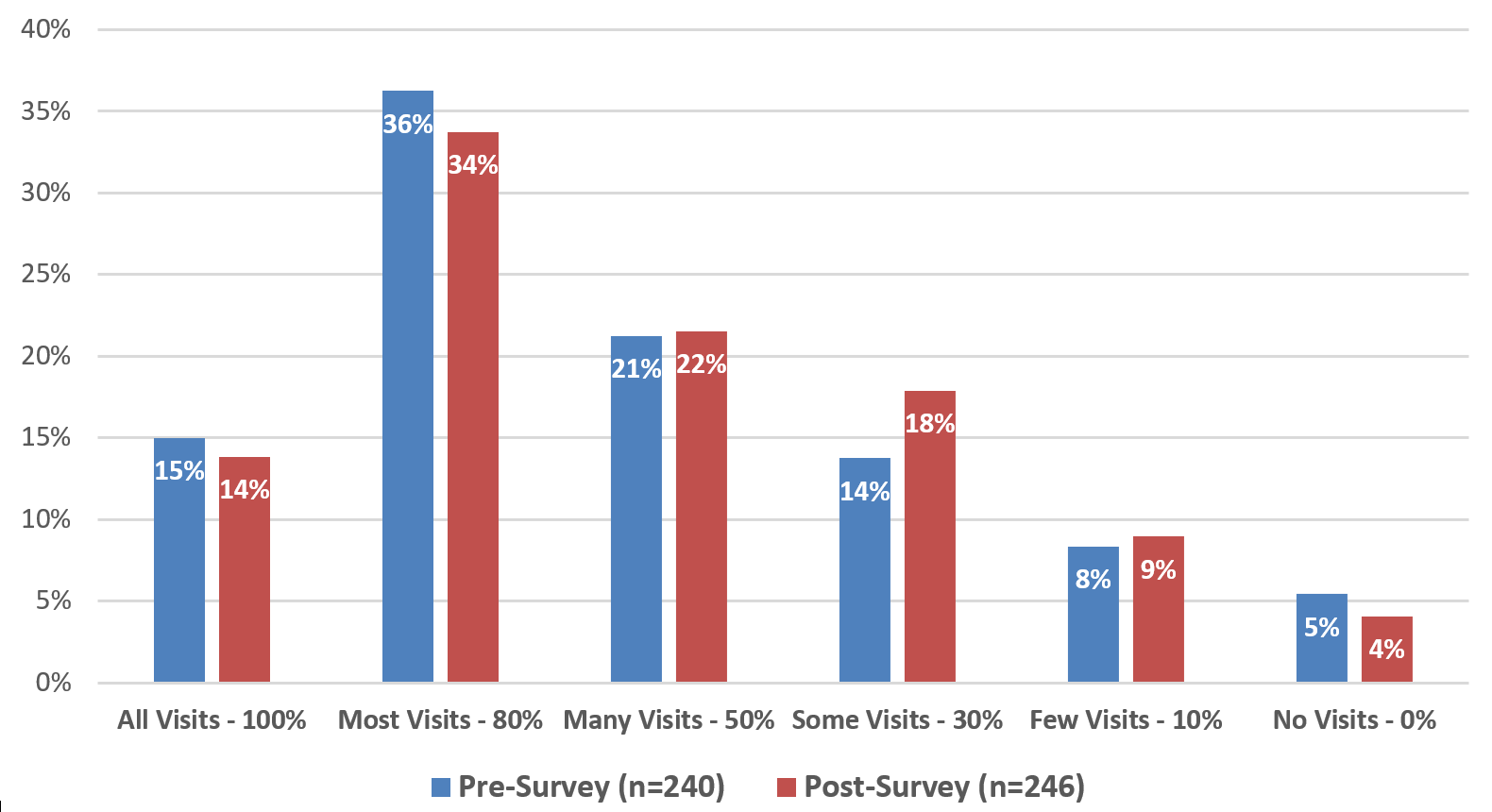General Pediatrics 3
Session: General Pediatrics 3
212 - Advancing Early Relational Health and Literacy Through Reach Out and Read in Early Infancy: Effects of Training and Implementation on Provider Practices and Beliefs
Sunday, April 27, 2025
8:30am - 10:45am HST
Publication Number: 212.4028
Danielle Sands, The Children's Hospital of Philadelphia, Oreland, PA, United States; Melina Bocanegra, Childrens Hospital of Philadelphia, WEST CHESTER, PA, United States; Sakina Adamali, Childrens Hospital of Philadelphia, PHILADELPHIA, PA, United States; Nicole F. Miller, Duke University School of Medicine, Durham, NC, United States; Danielle Erkoboni, Childrens Hospital of Philadelphia, Blue Bell, PA, United States

Danielle Sands, MPH (she/her/hers)
Clinical Research Project Manager
The Children's Hospital of Philadelphia
Oreland, Pennsylvania, United States
Presenting Author(s)
Background: Interventions like Reach Out and Read (ROR) are integral to promoting early relational health (ERH) and literacy. Recently, based on strong evidence, ROR expanded its model, fostering provider engagement with caregivers in the newborn period. Understanding how training on ROR early implementation affects provider practices and beliefs can support optimized strategies for scaling ROR starting at birth nationwide.
Objective: This study sought to evaluate the impact of training and launching ROR in early infancy on provider perceptions, beliefs and practices.
Design/Methods: Aligned with the expansion of ROR beginning at birth across a large metropolitan area, ROR pediatric primary care providers (PCP) received training (in-person or virtually) on an ERH approach to ROR anticipatory guidance with a focus on early infancy. Afterward, providers completed a survey on their beliefs, ROR practices and planned behaviors. One-year post-training, a parallel survey was administered to ROR PCPs in the same geography. Descriptive statistics and chi-square analyses were conducted to identify changes over time.
Results: 314 ROR PCPs from 60 medical offices completed the training; 240 completed the pre-survey and 246 completed the post-survey. The pre-survey showed most providers intended to give books in early infancy (newborn (95%) through 4-months (87%)). Post-survey data showed a significant increase in reported books given at every visit, except newborn to 1 month (p=0.01) (Fig 1). Significant increases were seen in overall anticipatory guidance around reading to bond (p=0.001) as well as the importance of talking and singing in the early infancy visits (p < 0.001, p=0.001)(Fig 2). No significant differences were seen in providers using the book to model reading behaviors during either all or most of the visits (Fig 4). Providers still significantly agree on lack of time as a key factor in modeling reading behaviors (p=0.002).
Conclusion(s): The expansion of ROR to include early infancy has positively influenced provider practices, while also shedding light on areas of improvement. Significant increases were observed in the distribution of books to newborns and infants, as well as greater emphasis on talking and singing at the newborn visit. Alternatively, modeling reading behaviors have not been impacted by early ROR implementation, further confirming the need to explore barriers such as time constraints. These findings support the effectiveness and sustainability of early ROR implementation in the promotion of early literacy and ERH within pediatric primary care.
Figure 1
 ROR book distribution by providers pre- and one-year post- implementation training on ROR beginning at birth
ROR book distribution by providers pre- and one-year post- implementation training on ROR beginning at birthFigure 2
 Provider reported anticipatory guidance on the importance of talking and singing across well visit ages, pre- and one-year post- implementation training on ROR beginning at birth
Provider reported anticipatory guidance on the importance of talking and singing across well visit ages, pre- and one-year post- implementation training on ROR beginning at birthFigure 3
 Frequency providers report modelling reading behaviors during their well visits, pre- and one-year post- implementation training on ROR beginning at birth (all p>0.05)
Frequency providers report modelling reading behaviors during their well visits, pre- and one-year post- implementation training on ROR beginning at birth (all p>0.05)
